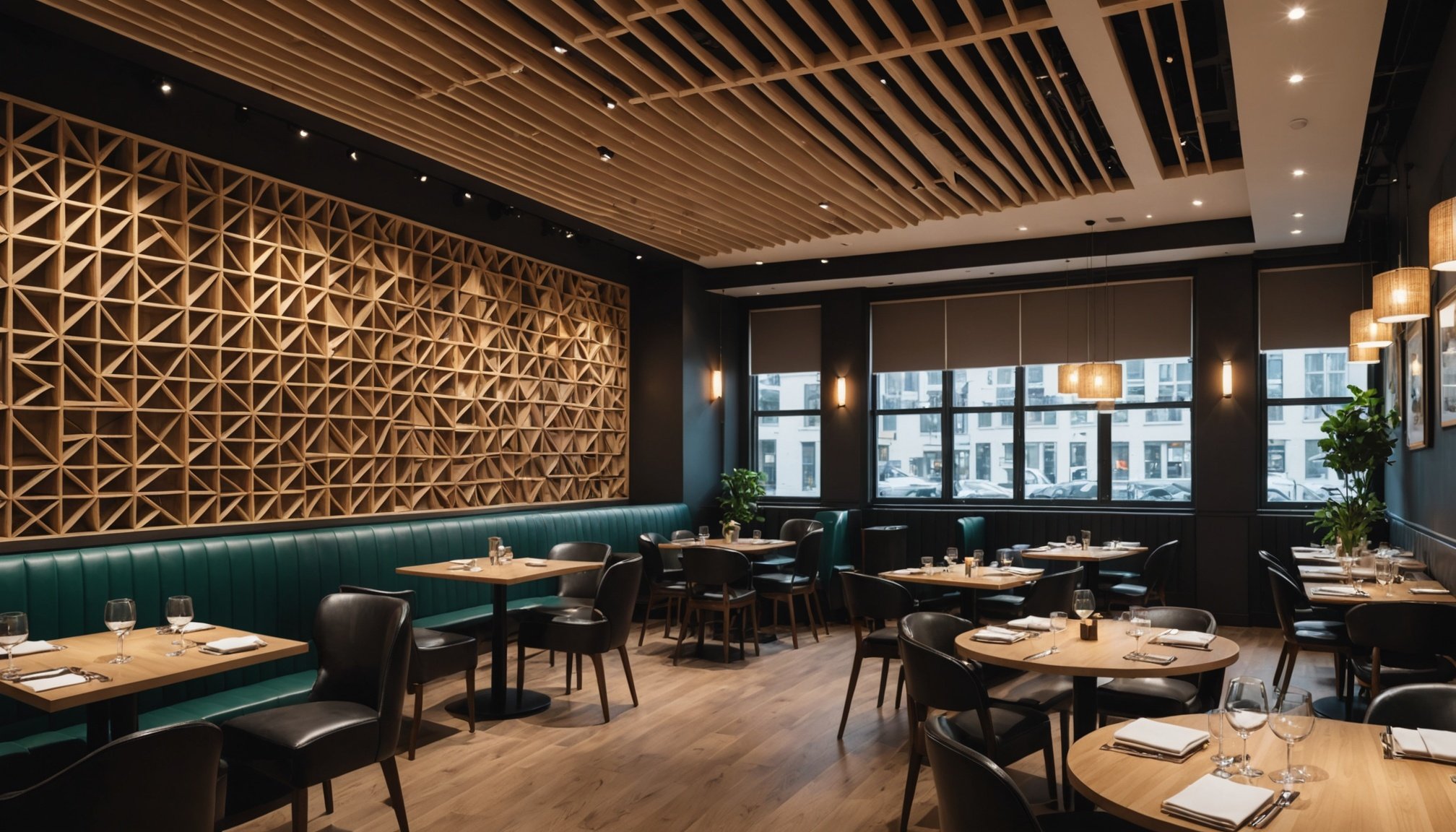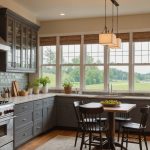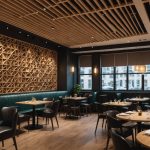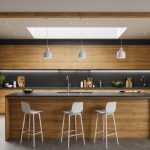Creating a captivating dining experience extends beyond the menu. Acoustic panels offer a stylish solution to enhance restaurant ambiance. They not only absorb excess noise but also serve as unique design elements. By exploring innovative ways to incorporate these panels, restaurants can elevate their atmosphere and ensure guests enjoy their meals in comfort. Discover how to marry aesthetics with functionality, transforming your space into a haven of culinary delight.
Importance of Acoustic Panels in Restaurant Ambiance
Enhancing the dining experience through sound control.
In the same genre : Essential tips for selecting the best premium meat supplier for your steakhouse
Overview of Acoustic Panels
Acoustic panels play a crucial role in managing noise levels within restaurants. These panels are designed to absorb sound, reducing unwanted noise and enhancing the overall restaurant atmosphere. By strategically placing these panels, restaurants can create a more pleasant dining environment, which is essential for both noise reduction and customer satisfaction.
Impact on Dining Experience
The presence of excessive noise can significantly detract from a customer's dining experience. It can lead to misunderstandings, discomfort, and ultimately, dissatisfaction. By integrating acoustic panels, restaurants can ensure a quieter, more intimate setting. This enhances communication and enjoyment, fostering a more positive experience for diners.
This might interest you : Discover the benefits of adding organic ingredients to elevate your restaurant menu
Benefits of Functionality and Aesthetics
Acoustic panels do not merely serve a functional purpose. They can also be aesthetically pleasing, contributing to the overall decor of a restaurant. By choosing panels that complement the design, restaurants can maintain their visual appeal while achieving effective noise reduction.
- Improved customer satisfaction
- Enhanced communication
- Aesthetically pleasing environment
Incorporating acoustic panels is a practical solution that combines functionality with visual appeal, making them an essential element in crafting the perfect restaurant atmosphere.
Innovative Acoustic Panel Designs
Exploring creative and stylish solutions for restaurant ambiance.
Modern Materials and Textures
Stylish acoustic panels are transforming the way restaurants manage sound. Modern materials such as recycled wood, fabric blends, and metallic finishes offer not only effective sound absorption but also a touch of elegance. These materials allow for diverse textures, from smooth and sleek to rustic and rugged, enabling restaurants to select options that align with their desired aesthetic.
Art and Custom Designs
Incorporating artistic elements into acoustic solutions is a growing trend. Custom designs can turn acoustic panels into statement pieces, seamlessly integrating them into the restaurant's theme. This approach not only enhances the visual appeal but also ensures that the panels serve a dual purpose: functionality and art.
Trending Colors and Patterns
The choice of colors and patterns in acoustic panels is crucial for aesthetic integration. Current trends favor bold hues and intricate patterns that complement restaurant themes. By selecting panels that echo the establishment's color palette, restaurants can maintain a cohesive look.
- Recycled wood for a natural touch
- Metallic finishes for a modern look
- Custom designs for unique aesthetics
Stylish acoustic panels offer a creative avenue for restaurants to enhance both their acoustic and visual environments, ensuring a harmonious dining experience.
Best Practices for Selecting Acoustic Panels
Optimizing sound absorption with the right choices.
Factors to Consider
When selecting acoustic panels, several factors must be evaluated to ensure optimal sound absorption. The material choices are paramount as they directly influence the panel's effectiveness. Consider the restaurant's specific needs, such as the level of noise reduction required and the existing decor.
Material Comparisons
Different material choices offer varied acoustic properties. For instance, fiberglass panels provide excellent sound absorption and are lightweight, making them easy to install. Fabric-wrapped panels offer versatility in design and color, while wooden panels add a natural aesthetic but may require additional treatment for enhanced sound absorption.
| Material | Acoustic Properties | Aesthetic Appeal |
|---|---|---|
| Fiberglass | High sound absorption | Limited design options |
| Fabric-wrapped | Moderate sound absorption | Versatile in design and color |
| Wooden | Low to moderate absorption | Natural and rustic look |
Size and Thickness
The size and thickness of the panels also play a crucial role in their performance. Larger and thicker panels typically offer better sound absorption, making them ideal for larger spaces. However, balance is key to maintaining aesthetic harmony within the restaurant's design.
By carefully considering these factors, restaurants can effectively enhance their ambiance through strategic acoustic panel selection.
Installation Techniques for Effective Integration
Optimizing the placement and integration of acoustic solutions.
DIY vs. Professional Installation
When considering acoustic panel installation, the choice between DIY and professional installation is crucial. DIY methods offer cost savings and flexibility but require careful planning and execution to ensure effectiveness. On the other hand, professional installation guarantees expertise, precision, and seamless integration with existing decor, albeit at a higher cost.
Techniques for Seamless Design Integration
Integrating acoustic panels with the restaurant's current design is essential for maintaining aesthetic appeal. Consider using matching colors and textures that complement the existing decor. Panels can be installed as part of the wall art or ceiling fixtures, blending functionality with style. This approach ensures that the panels enhance the ambiance without disrupting the visual harmony.
Tips for Strategic Placement
Strategic placement is key to maximizing sound absorption. Position panels in areas where noise is most prevalent, such as near kitchens or bustling dining areas. Use a combination of wall and ceiling installations to cover various sound pathways effectively.
- DIY: Cost-effective, flexible
- Professional: Expert precision, seamless integration
- Strategic Placement: Maximizes absorption, enhances ambiance
By considering these techniques, restaurants can achieve an optimal balance between sound control and aesthetic integration, ensuring a superior dining experience.
Case Studies of Successful Implementations
Exploring real-world examples of acoustic panel transformations.
Transformative Restaurant Examples
Restaurants have successfully used acoustic panels to transform their ambiance, enhancing both design and functionality. One notable case is "The Quiet Bistro," which struggled with excessive noise levels. By strategically placing acoustic panels, they achieved a serene environment, improving customer satisfaction significantly.
Before-and-After Design Improvements
Examining before-and-after scenarios provides insight into the effectiveness of acoustic panel implementations. "Urban Eats" initially featured an industrial design, which amplified noise. Post-installation of custom-designed panels, diners enjoyed a more intimate experience. The visual integration of panels also enhanced the restaurant's aesthetic appeal.
- The Quiet Bistro: Achieved peace with strategic panel placement
- Urban Eats: Enhanced intimacy and design through custom panels
Lessons Learned on Panel Selection and Placement
From these case studies, crucial lessons emerge on panel selection and placement. It's evident that choosing panels that align with the restaurant's theme is vital. Additionally, placing panels in high-noise areas, such as near kitchens, maximizes their impact. These examples underscore that thoughtful implementation of acoustic panels can lead to substantial improvements in restaurant ambiance and customer experience.
Expert Insights on Balancing Functionality and Decor
Exploring how to harmonize sound control with aesthetic appeal.
Interior Designer Interviews
Interior designers specializing in restaurant acoustics emphasize the importance of balancing functionality and decor. According to Jane Doe, an expert in the field, "The key is to integrate acoustic solutions seamlessly into the restaurant's existing aesthetic." This requires a keen eye for design and a deep understanding of acoustic panel capabilities.
Recommendations for Cohesive Design
Maintaining a cohesive design theme while incorporating acoustic panels is essential. Experts recommend selecting panels that not only match the restaurant's color palette but also enhance its visual appeal. Choosing custom designs that reflect the restaurant's unique style can ensure that the panels serve both a functional and decorative purpose.
- Match panels with existing color schemes
- Opt for custom designs to reflect unique style
- Prioritize seamless integration with decor
Future Trends in Acoustic Panel Design
Looking ahead, future trends in acoustic panel design are leaning towards more sustainable materials and innovative artistic elements. Designers are exploring ways to incorporate technology, such as interactive panels that change colors or patterns, to create dynamic dining environments. These advancements aim to elevate both the acoustic and aesthetic aspects of restaurant design.













